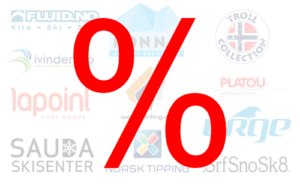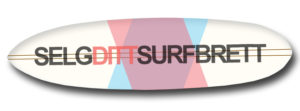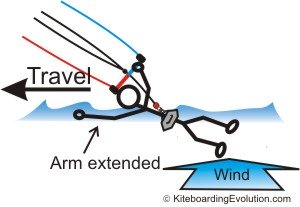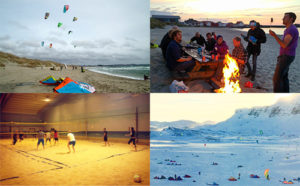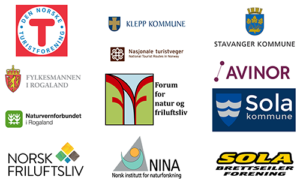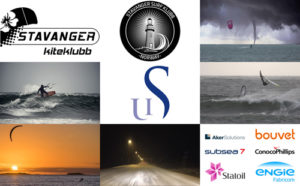Beginner kite course
This is a crucial step in becoming a kiter. If you skip this step, you risk seriously injuring yourself or someone else.
From Stavanger, it is possible to take either a water or a snow kite course. Learning on snow is relatively easy compared to learning on water. Having good ski or snowboard skills will help you to progress quickly on snow. Having wakeboarding or surfing experience will help you to progress on water.
The quality and duration of a kite course can vary. It may be tempting to go for a course that promotes quick progression, however, the most important things to learn on a course are about safety:
- How to safely set up and use the gear.
- How to fly the kite safely.
- How to kite safely amongst other kiters.
- How to kite safely at various spots in various weather conditions.
- How to safely launch and land.
- How to use the various safety release systems.
- On the water, how to body drag up wind so that you can retrieve your board.
- On the water, how to self-rescue. (Some courses skip this, but you should insist to have a demonstration)
From Stavanger, the easiest place to get a winter course is Haukeliseter.
In the summer, courses are held on one of the beaches near to Stavanger.
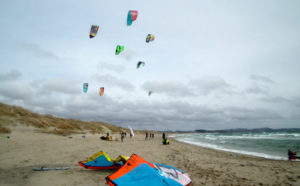
Here is a list of local kite course providers.
www.ivinden.no/categories/kitekurs
Ski / snowboard
It is possible to snow kite on skis, snowboard, Telemark etc. It is even possible (but not recommended) to kite on cross country skis. It is easiest to learn on the equipment that you are most used to. If you are equally good on skis and snowboard, then you will find it easier to learn to kite on skis as they are more stable.
Once at an intermediate level, skiers will kite faster and further than snowboarders. But snowboarders will get more of a surf feeling in the deep snow.
Progression kite course
Once you have completed a beginner course, it may be beneficial to attend a progression or private lesson to gain confidence before you start kiting on your own.
If you learnt on the snow, some schools offer a conversion course from snow to water.
Equipment
Once you have completed a course it is important to kite again as soon as possible, whilst the lessons from your training are still fresh.
Some of the schools will rent gear to students that recently completed a course. This is a nice way to progress a little more before you commit to buying kites.
If you are ready to buy, here are some tips on what to look for…
Kite style

As a beginner, you need a kite that has:
- Plenty of depower.
- Is easy to relaunch on the water.
- Does not turn too quickly.
Like many sports, kiting equipment is often specifically designed for one style / discipline of the sport.
Styles that are bad for beginners:
- Freestyle / Wake style / Big air – Often referred to as “C” kites. These are designed for extremely fast turning and agility. They often have very limited depower. This is a huge disadvantage for beginners and intermediates, and can even be dangerous.
- Foil / Race – These are designed for extreme performance. They are absolutely no good for beginner or intermediate riders.
Styles that are OK / good for beginners:
- Surf – Surf kites are designed for drifting. They are normally easy to relaunch, but are not great at going up wind. These are OK as beginner kites, but not ideal.
- Beginner – Schools often use kites that are specifically designed for beginners. They are really easy to fly and relaunch. However, they are very heavily built and low performing. This is OK for your first kite, but you will quickly out grow it.
- Freeride – The do a bit of everything kites. These are not specifically aimed at beginners, but are normally fairly easy to fly and relaunch. They also have enough performance in all disciplines that you can progress. This is the style that we recommend.
Kite size
Ideally, you should have 2 kite sizes, so that you can safely kite in a variety of wind speeds. We would recommend the following sizes, depending on your weight:
- 50-65 kg: 6 + 10m2
- 65-80 kg: 9 (or 10) + 12m2
- 80-95 kg: 10 + 14m2
If you only have the budget for one kite, either:
- Get the bigger of the two kites above, with the intention to buy the smaller one at a later date. This means that you will only be able to kite in light winds in the beginning.
- Get a size in-between the two sizes above, and only kite in medium strength winds.
You may find that as you progress, you want more options. Many intermediate riders will have 3 or even 4 sizes to choose from.
Board style

As a beginner you want to look for:
- Normal straps (not strapless or boots)
- Twin tip (you can ride the board in both directions)
- Finns (normally 4 small fins, one in each corner of the board)
- A handle in the middle of the board.
As with the kites, boards come in various styles.
Styles that are bad for beginners:
- Wave / directional – These boards are designed to go in one direction only. If you wish to ride the other way, you either have to turn the board under your feet or ride on your toes. These are most definitely not for beginners.
- Foil boards – These boards float out of the water, balanced on a flying wing that sits in the water. These are incredibly hard to ride and are absolutely not for beginners.
- Freestyle / Wake style / Big air twin tips – If they have boots, then they are not for beginners. If they have no fins, they are no good for beginners. But if they have normal foot straps, fins, and a handle in the middle of the board then they will be OK.
Styles that are OK / good for beginners:
- Beginner twin tips – Schools often use boards that are specifically designed for beginners. They are really easy to ride. However, they are very heavy, large and underperforming. This is OK in the beginning, but you will quickly outgrow it.
- Freeride twin tips – The do a bit of everything boards. They have enough performance in all disciplines that you can progress. This is the style that we recommend.
Board size
The bigger the board, the easier it will float on the water. That is why beginner boards are huge. However, these large boards will not offer you much progression.
We recommend that you go for a standard board size for an intermediate rider. Check out the guidelines on the manufacturers websites, they will have recommendations based on your height and weight.
Where to buy
New gear
There are many online retailers in Norway and throughout Europe. There is one shop in Stavanger that has kite gear:
Many of the online shops in Norway have sponsored riders in Stavanger that will lend you gear for testing. Ask the shops to arrange a test.
As a Stavanger kiteklubb member, you will get a discount at many of the Norwegian online stores.
Click here for details on SKK discounts.
Second hand gear
Many of the schools sell off used gear each year.
“SELG DITT SURFBRETT” is a Facebook group for selling surf gear, but often has some kite gear.
Finn.no has a huge amount of second hand kite gear.
Be aware though, there is quite a lot of gear that is either not suited to beginners, or is so old that it is dangerous to fly.
We would not recommend that you buy anything that is older than 4-5 years.
Always ask the seller about damage and repairs to second hand gear.
Other gear
Wetsuits / boots / gloves etc
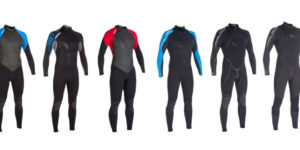
To ensure a good fit, it is always best to try on a wetsuit before you buy it. In Stavanger there are many places to buy wetsuits. In addition to www.srfsnosk8.no many of the regular sports shops sell wetsuits.
In Stavanger, a 5/4 mm suit will be good all year round. If you get cold easily or want to kite through the winter, you will need a 6/5 mm.
Don’t buy a board leash!
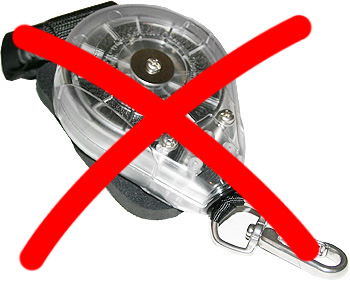
They are dangerous. Even the models that claim to be safe.
If you don’t believe us, we dare you to type “board leash injury” into google and click on images.
On your kite course you should have learnt to body drag up wind. If you need a reminder, check out this page:
This is an easy skill to master and once you have it, there is absolutely no need to consider a dangerous board leash.
If you still are not convinced, then here is an alternative gadget that will replace the need for a dangerous board leash:

Stavanger kiting community
It is dangerous to kite alone and much less fun than kiting with others. Kiters are friendly and want to share knowledge and experience.
We recommend that you join Stavanger kite klubb:
This helps us to provide events for the kiting community:
And to represent the best interest of the kiters to the local authorities:
Also, follow the latest news on Facebook page:
And also check out the other Facebook groups where you can interact and meet other kiters:


